We all have our pet peeves, don’t we?
Well, one of my biggest pet peeves are sewing tutorials that claim you can sew something in 10 minutes. Now there may be superpeople out there who are speed demons that can actually complete those projects in 10 minutes.
I’m here to tell you that I’m not one of them!
If you’ve been sewing for any length of time, you’ve probably seen various tutorials for the 10 Minute Table Runner.
I’m going to say this flat out… I defy anyone to cut panels from two different fabrics, pin and sew those panels together, press the seams either open or to one side, turn right side out and press again. Center the narrower fabric over the wider fabric, pin and sew the ends, clip the corners, press those seams open, turn the ends to form points and then either sew them in place or sew on a button at each end to keep the pointed ends in place.
And do it all in 10 minutes!
So I call my version the One Hour Table Runner because following my instructions you will end up with two finished table runners… from starting to cut to finished table runners in approximately 2 hours.
The table runners will be the reverse of each other. One will have fabric 1 as the feature fabric running down the center and the other will have fabric 2 as the feature fabric.
If you’re a really fast sewist, you may finish sooner. If you’re just getting started sewing, it may take you a little longer.
My version is also longer than the 10 minute table runner which is cut width of fabric; resulting in a finished table runner that is at most 40 inches long.
I like my table runners to be at least as long as the table but prefer them to hang over the end a bit.
How to calculate the length of fabric you’ll need to make each one hour table runner:
First, measure the length of your table.
Then put that number into the following formula:
Length of table + (desired overhang X 2) + (seam allowance X 2) = length of fabric you’ll need to buy.
For instance, my table is 60 inches long. I wanted an overhang of 4 inches on either end. Add ½” seam allowance to each end.
60” + 8” + 1”= 69” long
Note: I’ve started rounding that up to 70″.
To calculate how wide to cut the panels:
Center feature fabric panel:
Width of finished table runner – (borders X 2) + (seam allowance X 2) = cut to make for center feature fabric panel.
Again I’ll use my own as an example. I decided I wanted a 14” wide table runner, with two borders of 2 ½” and allowing for ¼” seam allowance:
14” – 5” + ½” = 9 ½” width required for the feature fabric that runs down the center of the table runner.
To determine the size to cut the complementary fabric:
Width of finished table runner + (borders X 2) + (seam allowance X 2) = cut to make for center feature fabric panel.
So the calculation for my second fabric is:
14” + 5” + ½” = 19 ½” width required for the fabric that will form the backing and the borders of the table runner.
Most cotton fabrics come in 44/45” widths. If I cut my fabric across the width of the fabric, I’d have to sew two pieces together to get a length of fabric long enough to make my table runners.
Instead, what I do is purchase 2 yards of fabric (72”) in each of my chosen fabrics.
The extra inches are to allow for wonky cutting at the fabric store and any shrinkage that may occur when I pre-wash the fabric.
Going forward in the tutorial I will be using my measurements. You would simply substitute your own measurements when making yours. 🙂
Materials needed to make 2 one hour table runners:
- 2 complementary fabrics – length determined by the preceding calculations
- Thread
- Pins
- A rotary cutter
, quilt ruler
, and cutting mat
are also recommended.
Let’s get started making these One Hour Table Runners!
After the fabric is washed and pressed, you’ll need to trim off one selvage edge.
To do this… fold it in half lengthwise and then in half again. Place it on the cutting mat and square up one side.
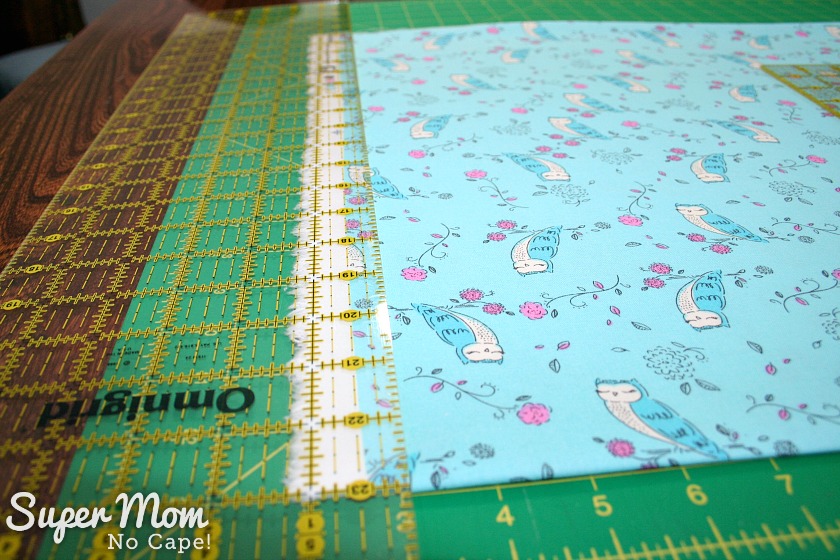
Quick tip: To avoid having to flip the fabric after squaring up, I place my long 6″X24″ ruler along the edge as pictured above and then butt my 15″ ruler against it as pictured below.
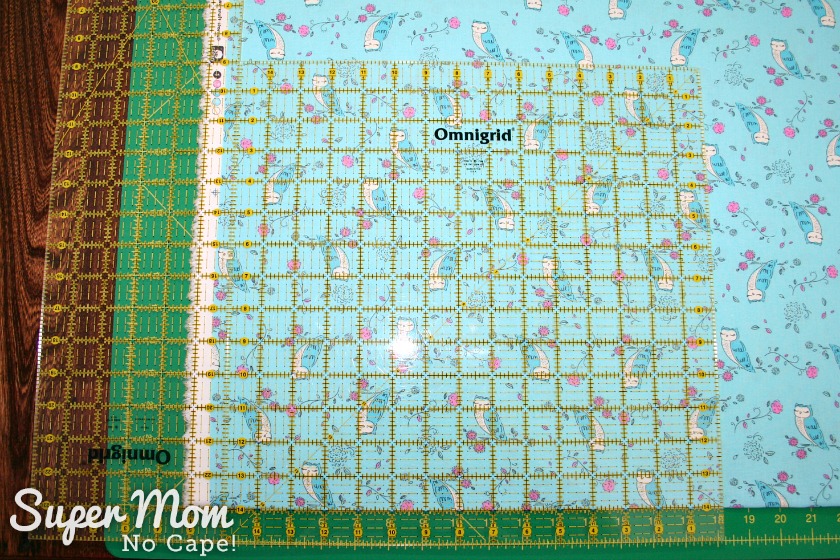
Make sure the fabric is lined up square along the bottom. Slide the 15″ ruler out of the way, hold the long ruler firmly and make the cut.
Next, make one cut 19 ½” wide from fabric 1.
There are two ways you can do this.
The first way, you would line up the edge you just cut with the first line on your cutting mat and then place the edge of your long ruler at the 19 ½” mark on the mat as pictured below.
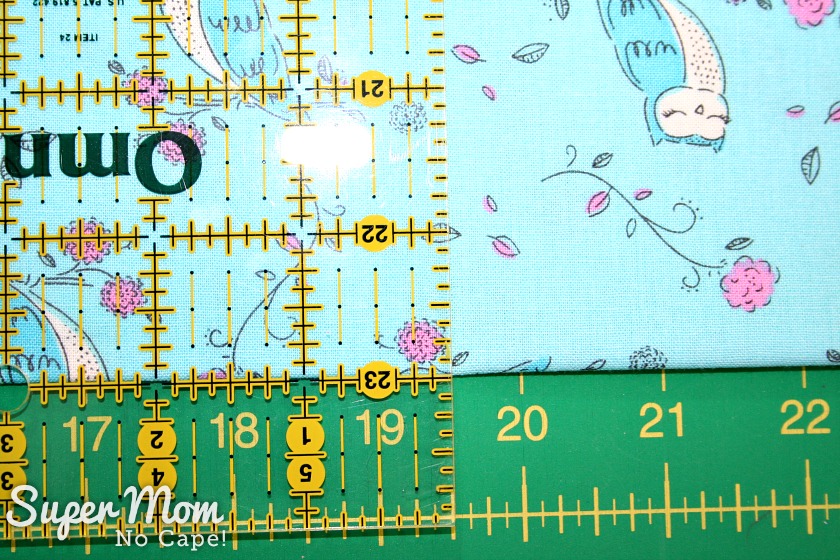
The second way to make this cut is to use two rulers as pictured below.
Line up the 15″ ruler on the 13 ½” inch mark with the 6 inch ruler butted up against it. Hold the 6 inch ruler firmly in place and make the cut.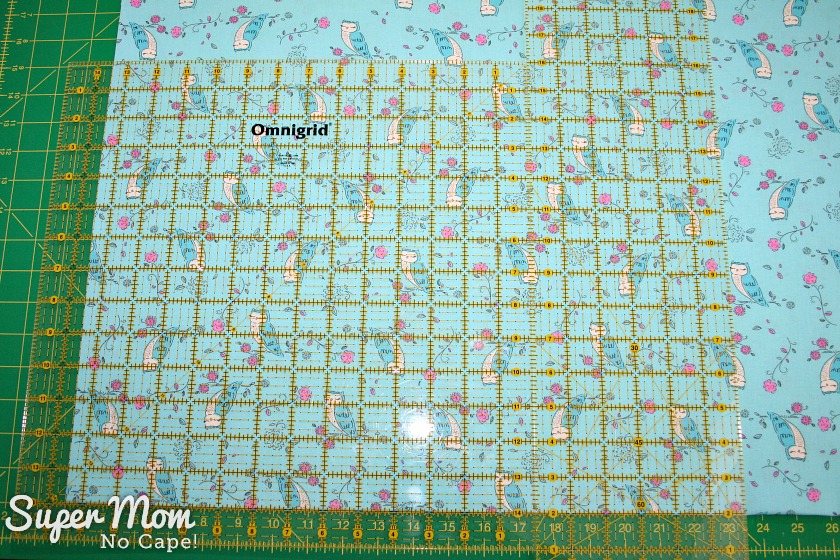
Make 9 ½” cut of this same fabric using either of the methods shown above.
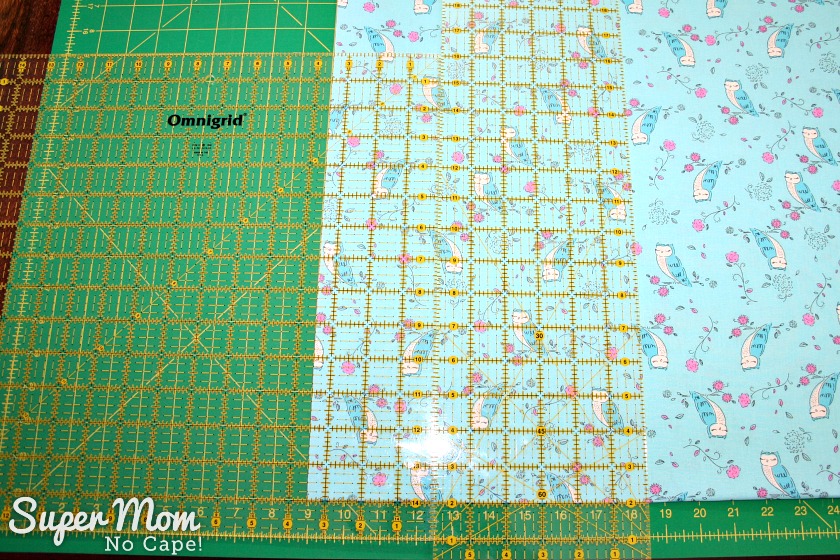
Repeat the above steps for fabric 2.
You should end up with two sets of fabric that look like this:
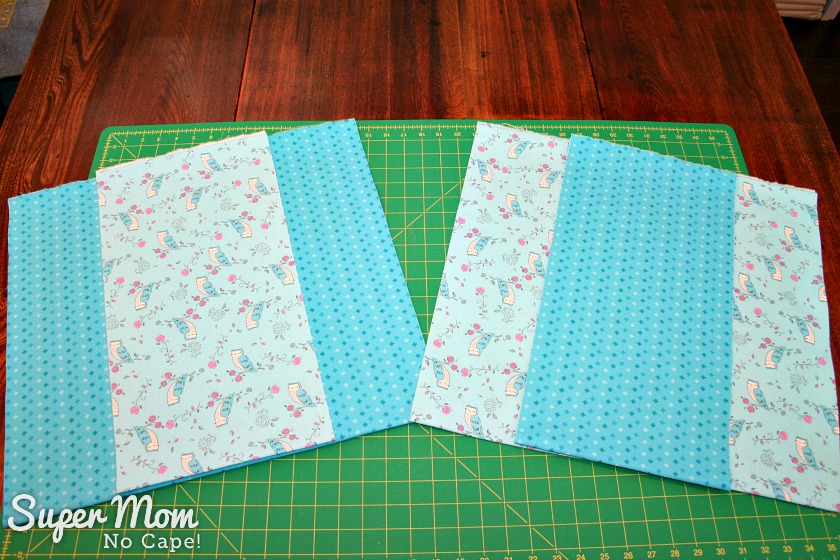
To cut the panels to length:
Fold each panel in half.
Place the fold on the first line of the cutting mat.
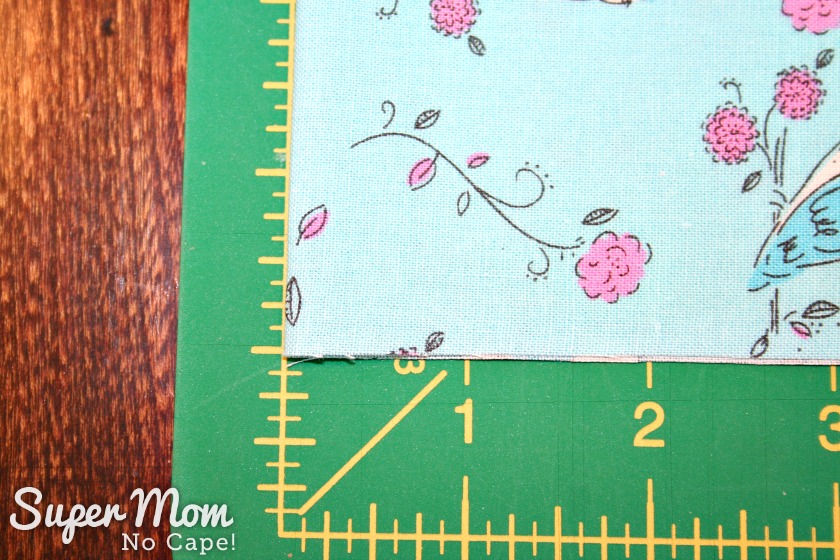
Line up the 6″X24″ ruler at the 35″ mark and cut.
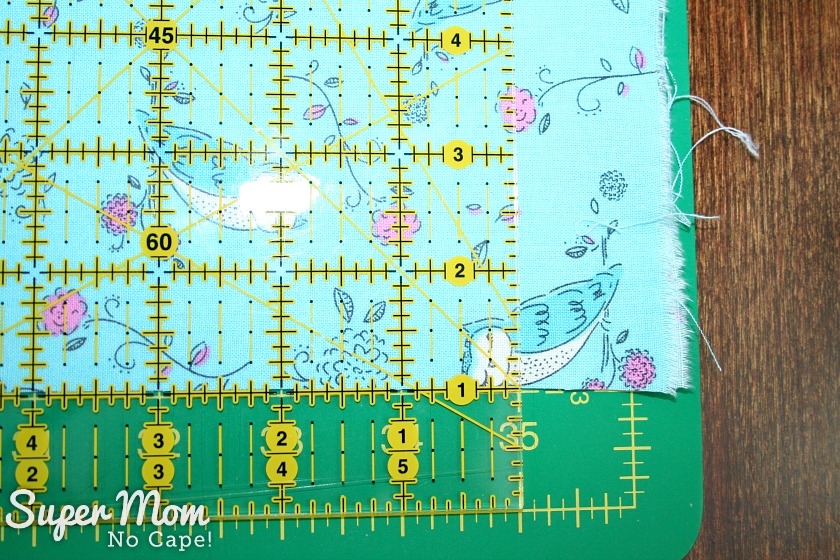
Now I realize that not everyone is fortune enough to have a 36″ cutting mat or perhaps your table runner needs to be longer than 70″, so I’m going to demonstrate how I measure longer lengths of fabric.
First line up the 6″X24″ruler at one end of the panel as pictured below with the 23″ mark at the corner.
I line it up at the 23″ mark rather than along the edge because I find it’s easier to make sure that everything is square.
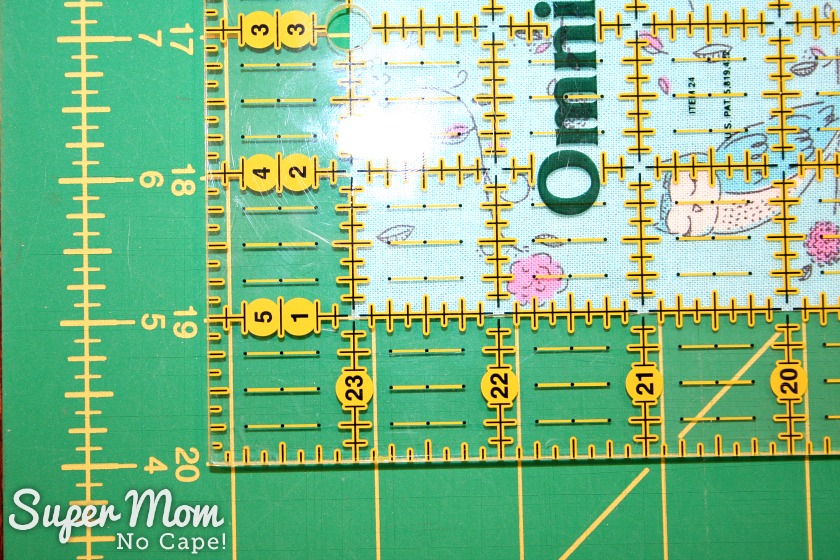
Next make a mark on the fabric at the other end of the ruler.
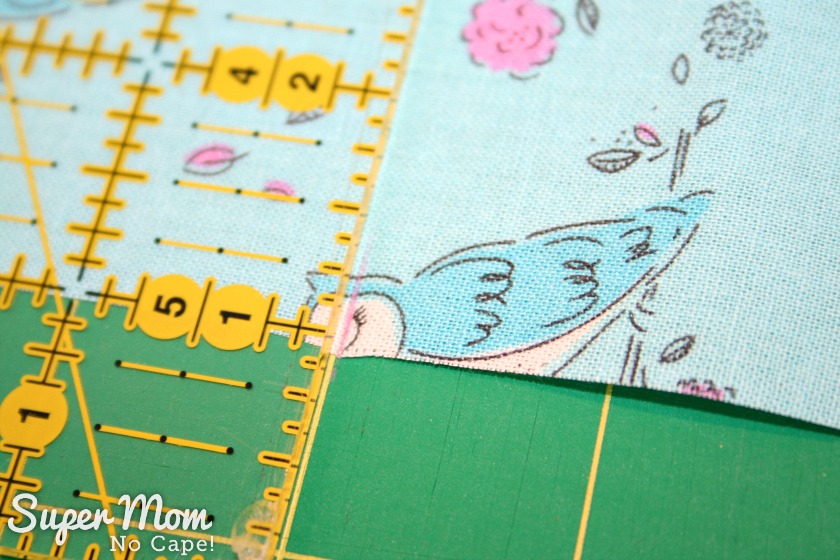
Slide your ruler along the fabric and line up the pencil mark with the 23″ mark.
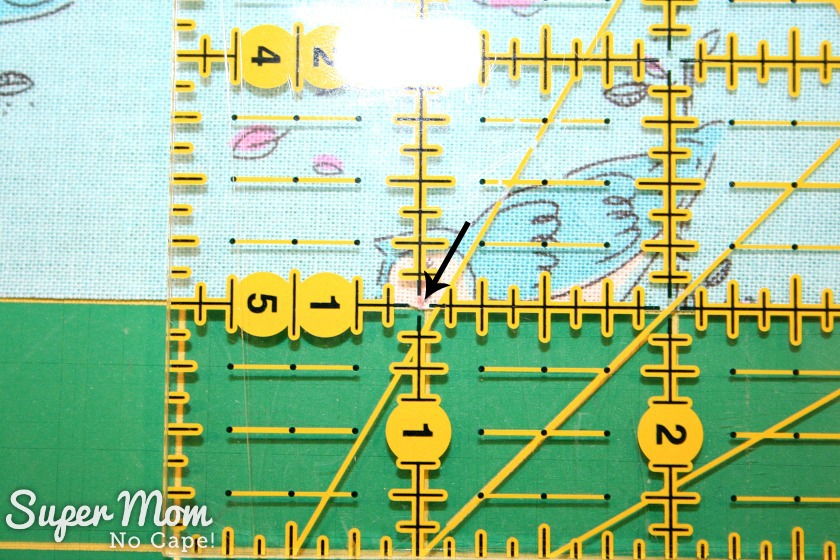
Do this the number of times needed to get the length you require.
I needed to make three 23″ measurements plus one 1″. (23+23+23+1=70)
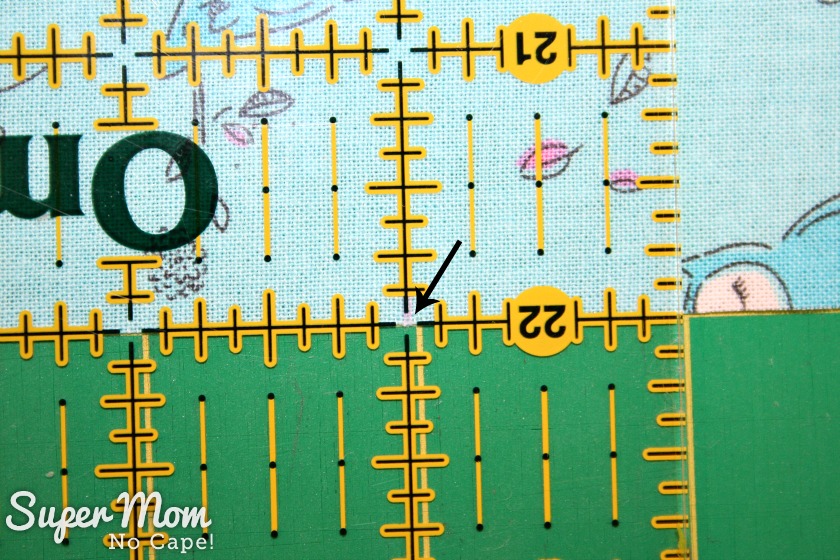
Make sure that your fabric is laying square on the cutting mat and cut.
Repeat for the other three panels.
Now you’re ready to start sewing!
Begin by sewing two complementary fabric panels together using one 19 ½ wide and one 9 ½ wide panel.
Mark the centers on the long edges of each panel.
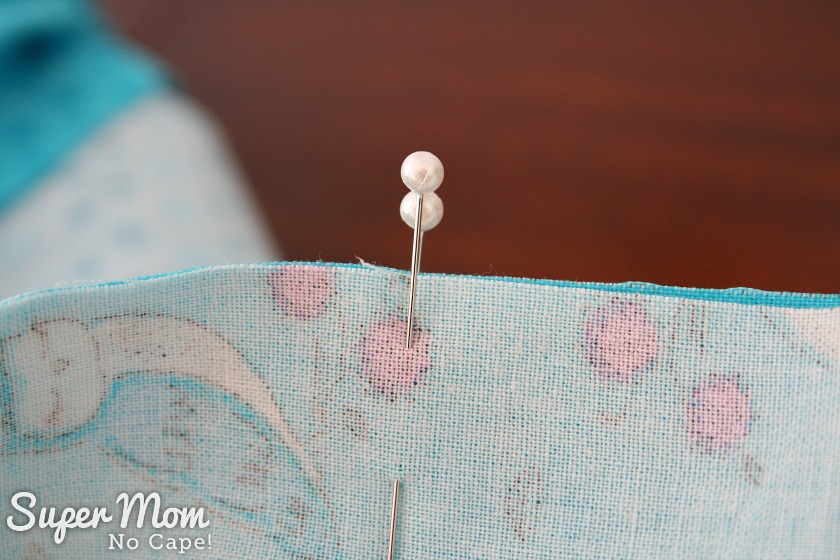
With right sides of fabric facing each other, pin the panels together matching the centers and the ends and continue pinning along the entire length making sure the panels lie flat against each other.
Sew with ¼” seam allowance.
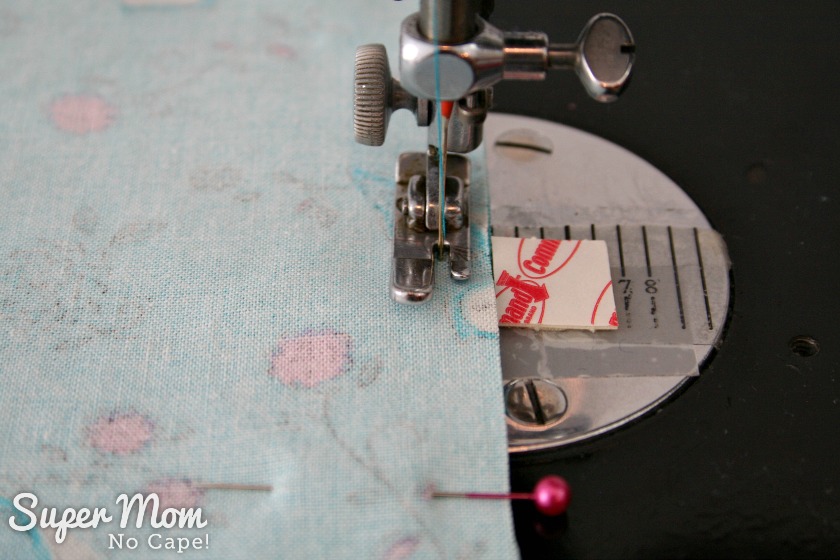
To save time, sew assembly line style.
In the quilting world, this is called chain piecing. When you finish a seam on one table runner, start the same seam on the second table runner.
Note: Make sure to backstitch at the beginning and end of each seam. Once you’re finished this step, clip the threads between the table runners and move on to the next step.

With right sides of fabric facing, pin the other two long sides together. You’ll have a tube that looks like this:
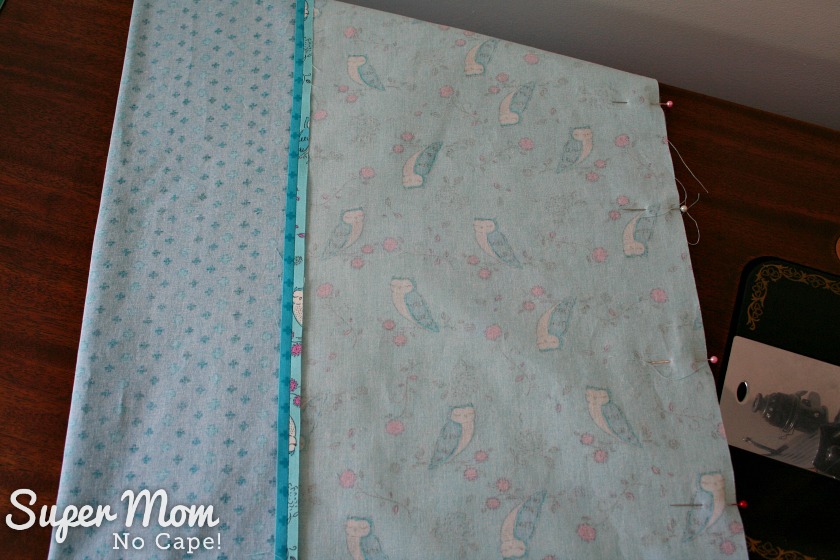
Sew using a 1/4″ seam allowance.
Press the seams open.
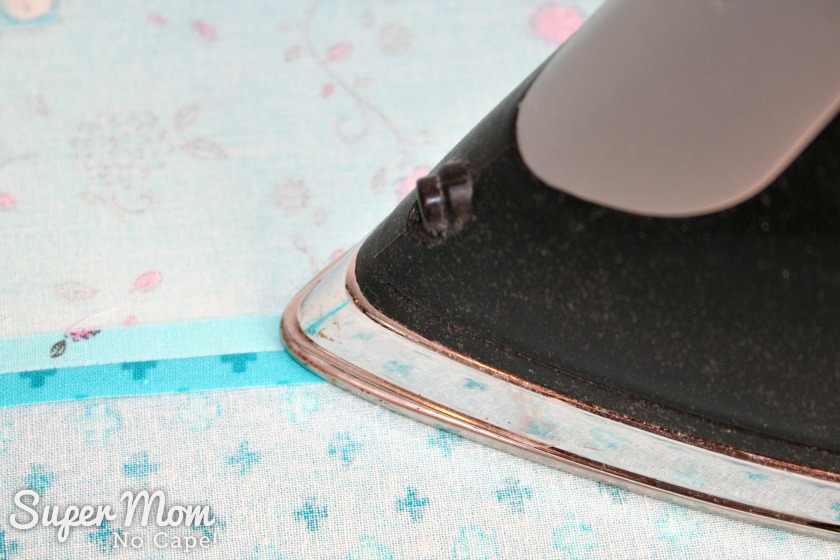
Turn right side out.
To do this… slide your arm inside the tube, grab the opposite end and pull through.
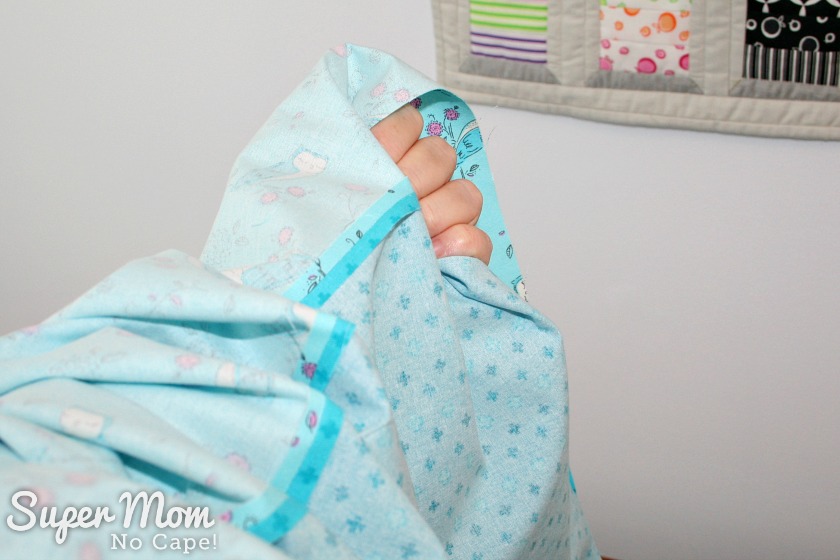
Center the feature fabric over the backing fabric and pin in place.
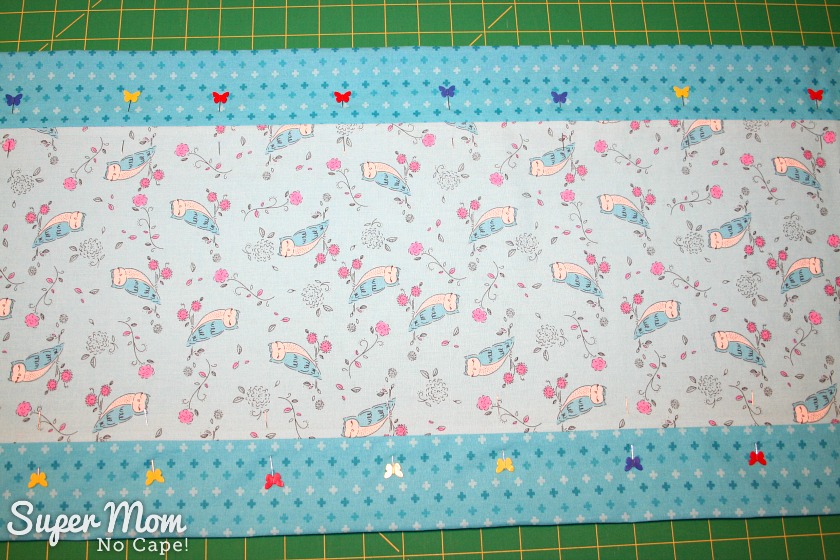
To make this easier, I measure to make sure that the borders are 2 1/2″ on either side.
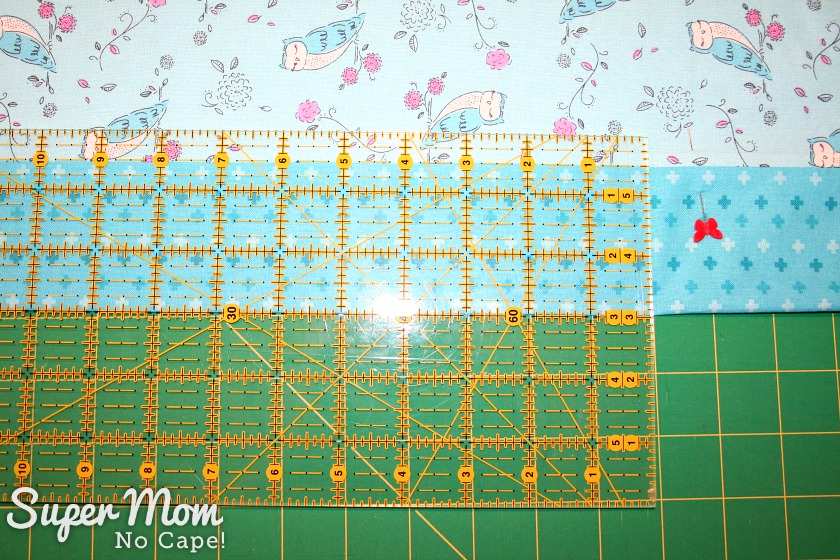
Press.
Topstitch on either side of both long seams.
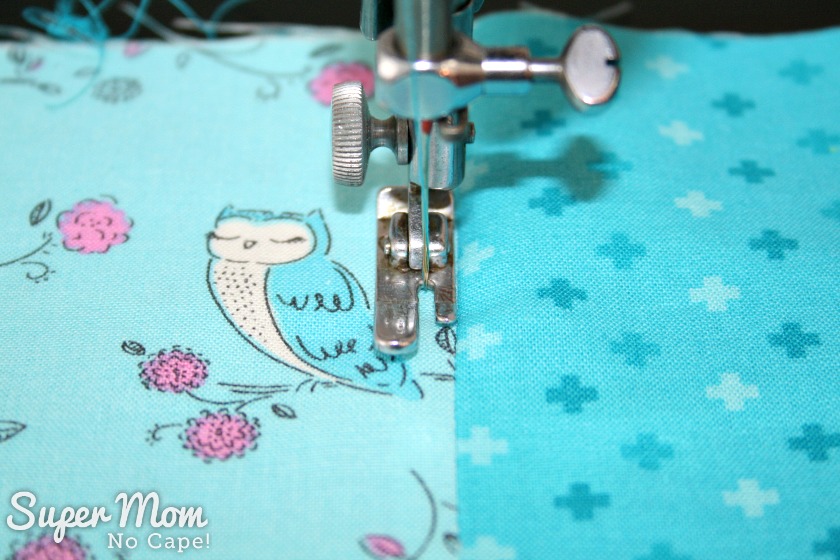
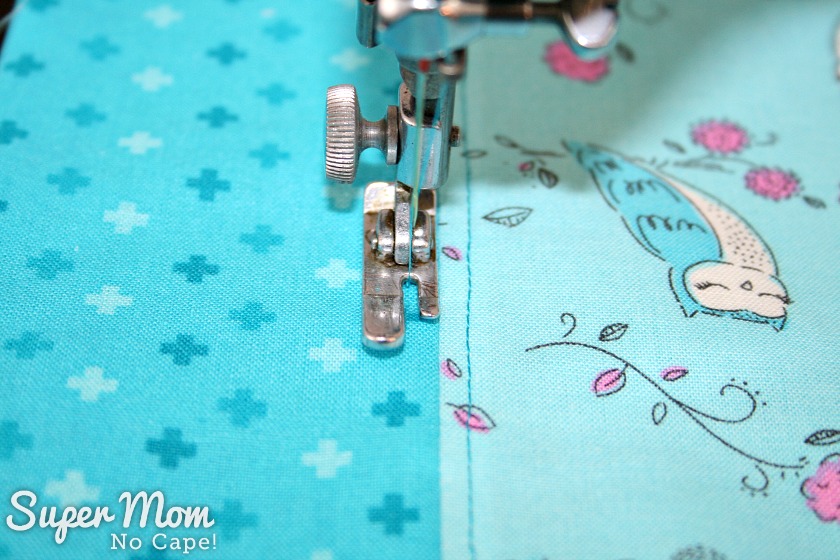
To form the point at each end of the table runner:
Fold the narrow end in half with the backing fabric to the inside and pin.
Make sure to match up those seams!
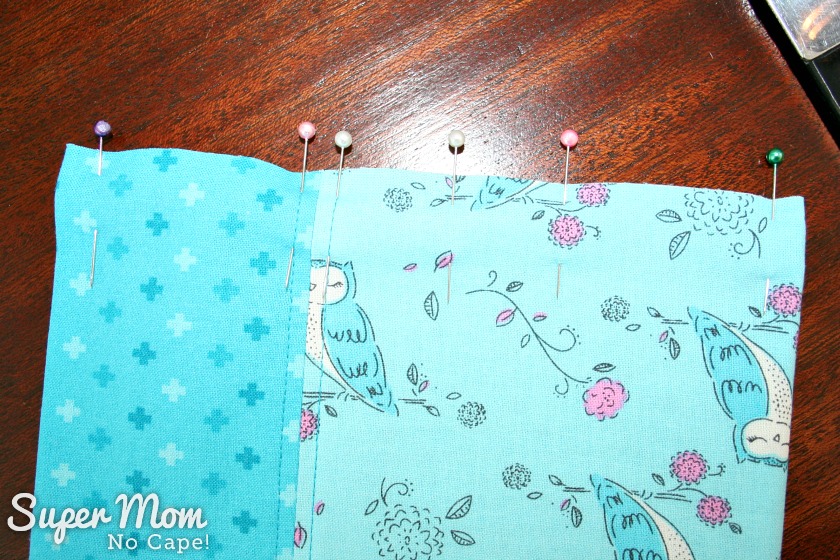
Sew using ½” seam allowance.
Quick tip: Start sewing from the outside edge and sew towards the fold.
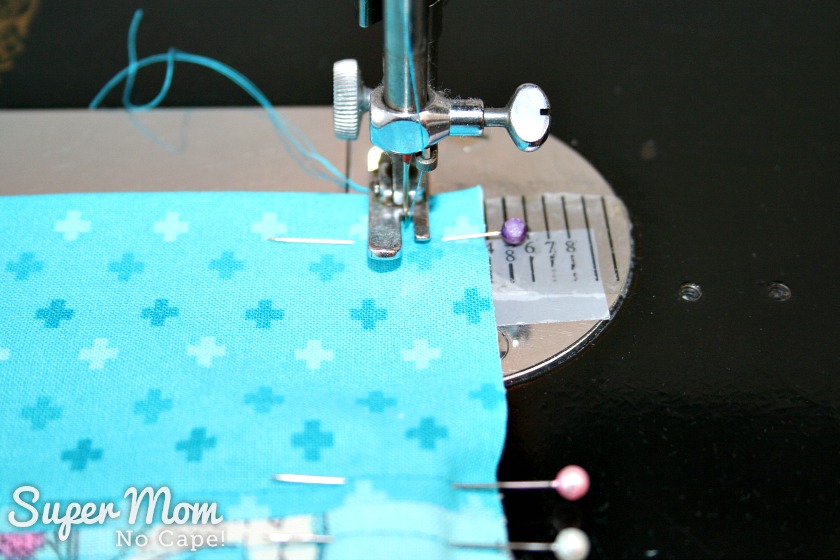
Clip inside corner as shown.
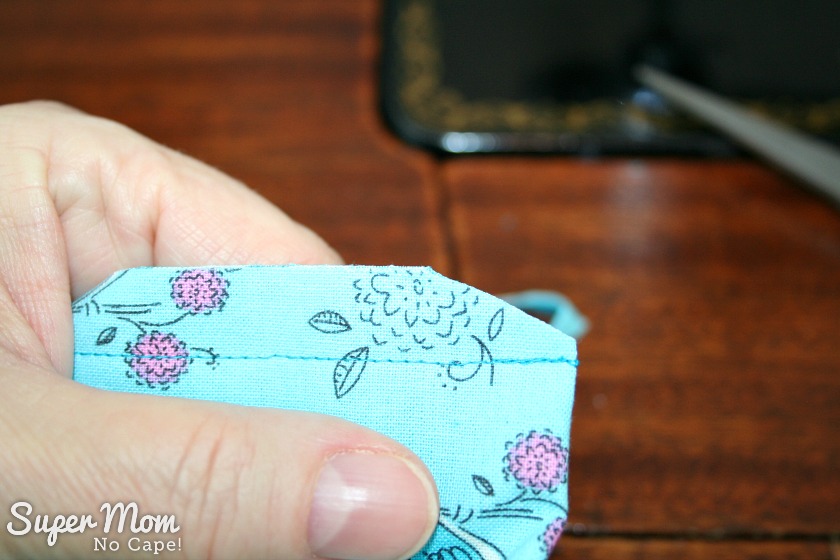
Trim seam to ¼”.
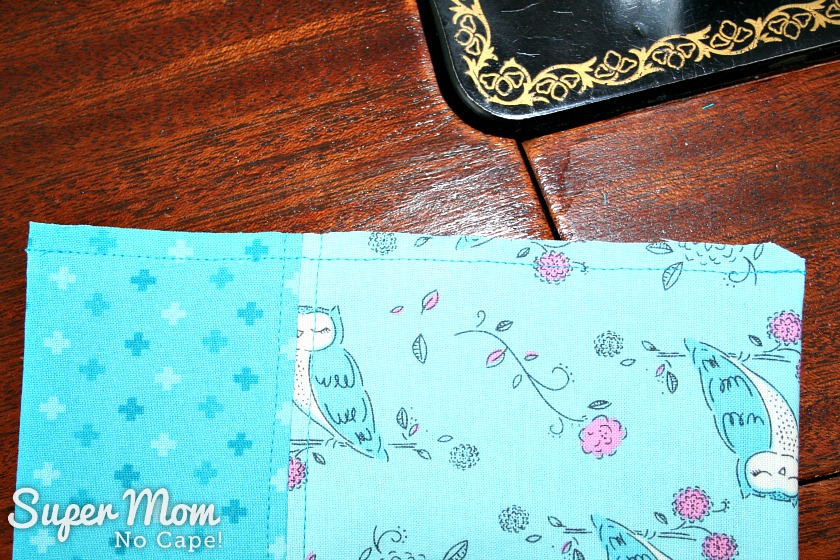
Press seam open.
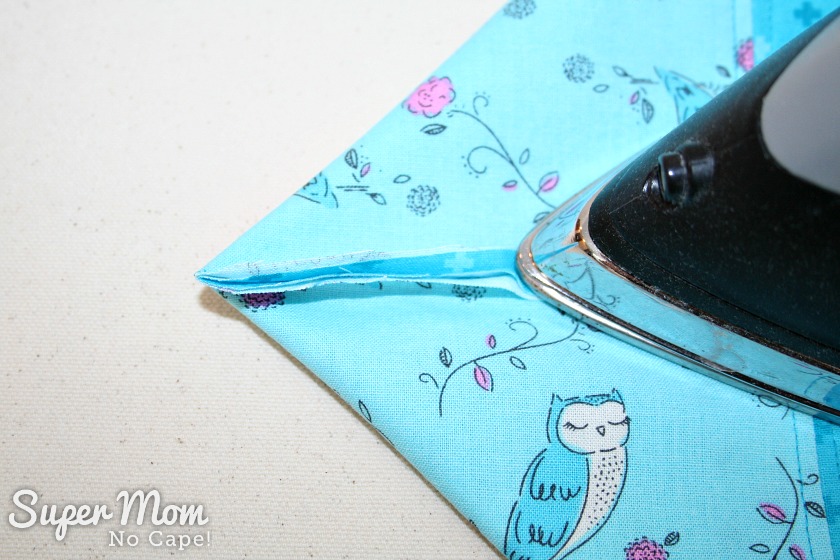
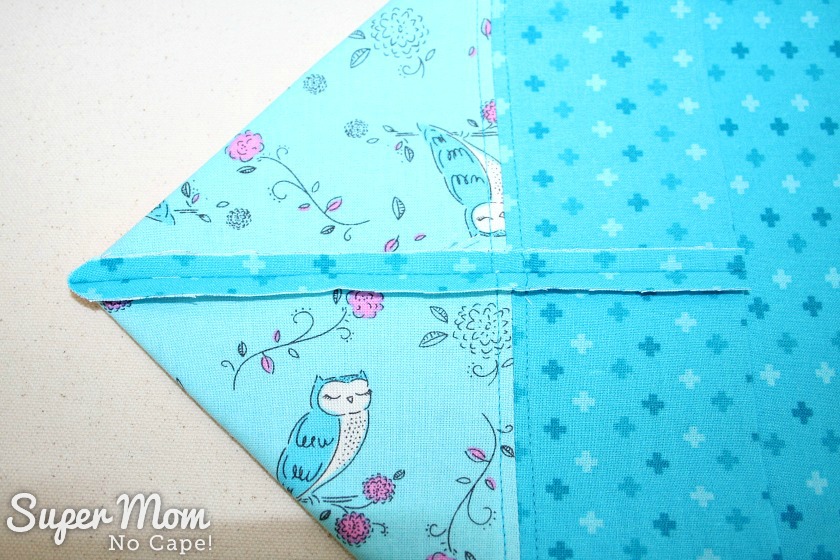
Turn right side out and push the point out using a point turner. (The tip of your scissors will work too.)
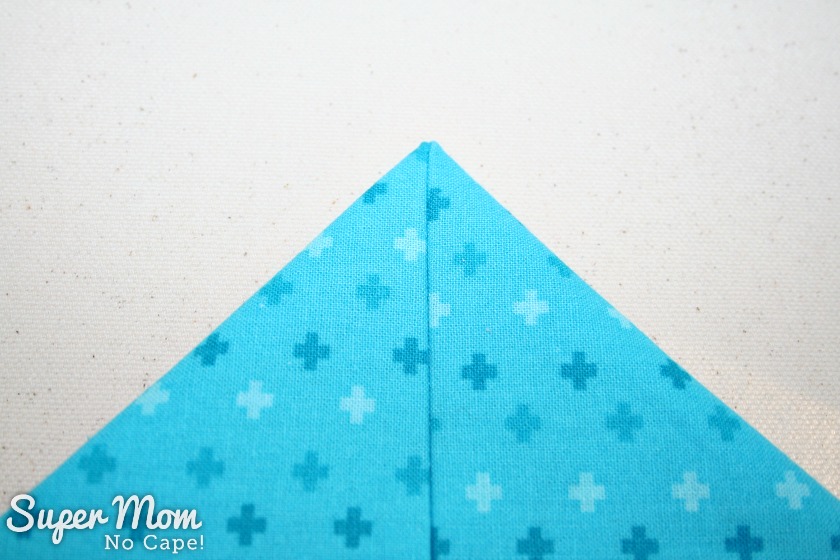
Match the seam of the pointed end to the center of the feature fabric. Pin in place. Press.

Topstitch close to the edge.
To avoid having those little untidy tails of thread at the edge of the table runner once the threads are trimmed, I recommend that you start stitching about ½” in from the edge as shown below:
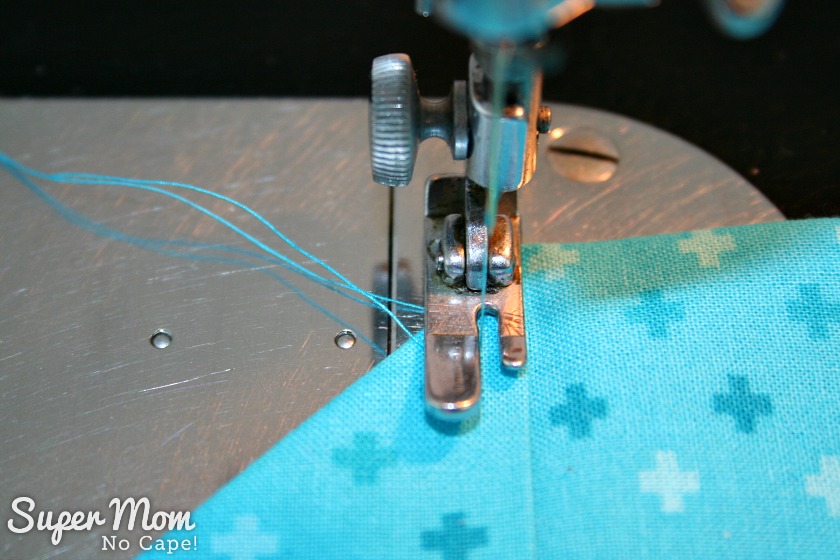
Then backstitch to the edge before continuing forward.
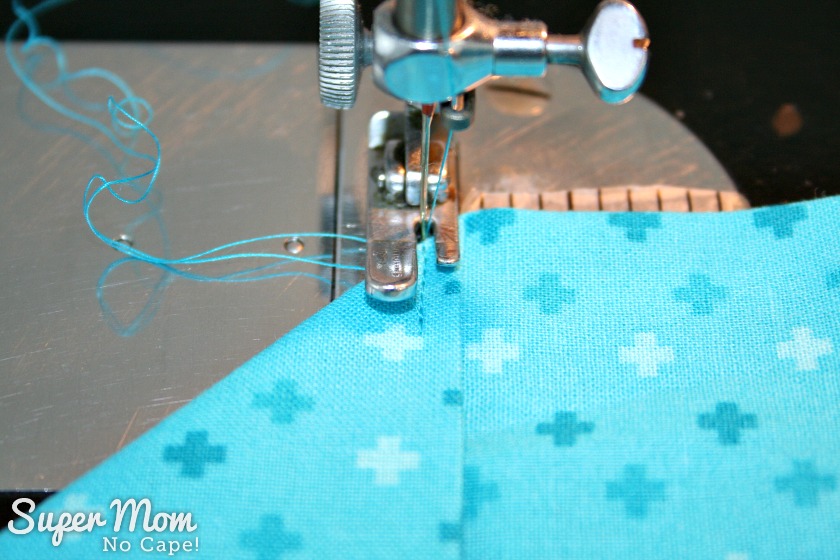
The start of your seam will look like this:
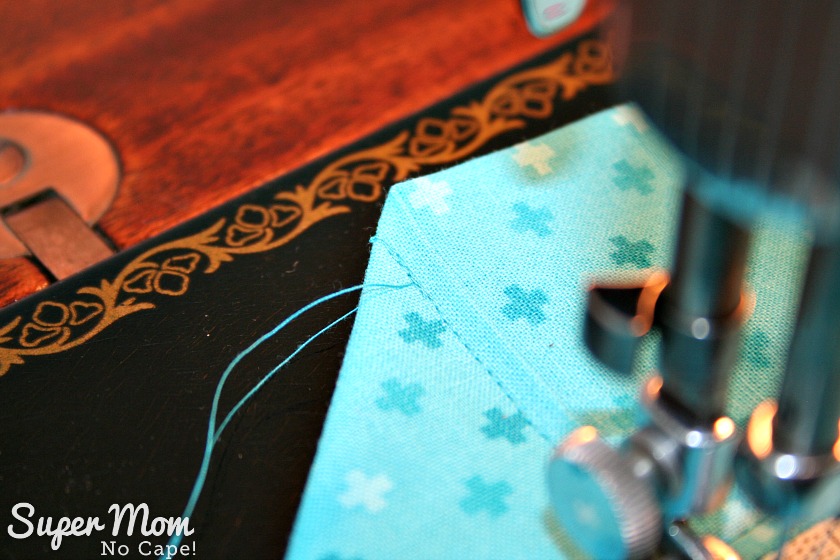
End your topstitching by sewing to the end and then backstitching ½”.
Repeat for the other end of table runner 1.
Make the points on table runner 2 in the same way.
Trim the threads.
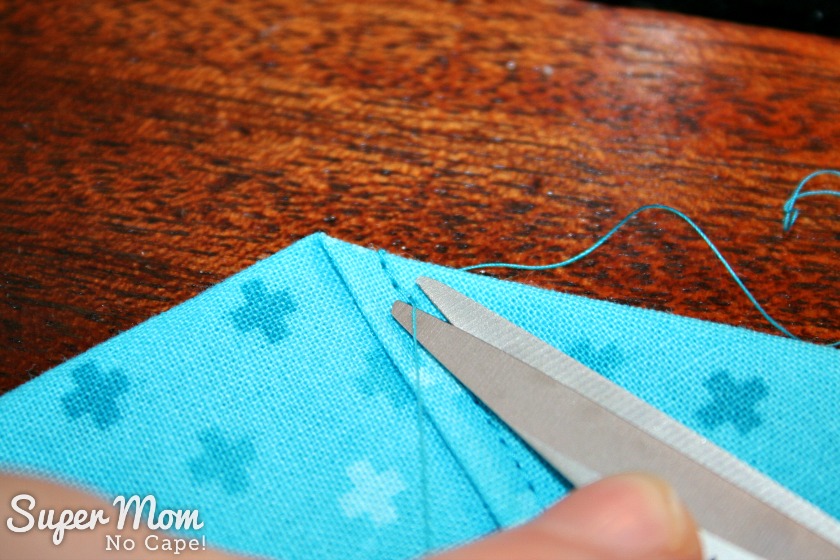
You now have two table runners completed!
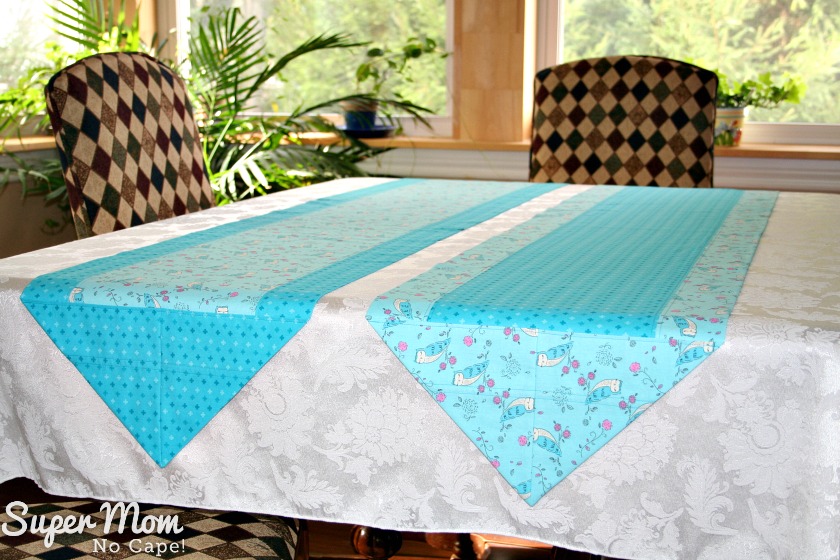
This one has the adorable owl fabric as the feature fabric in the center panel.
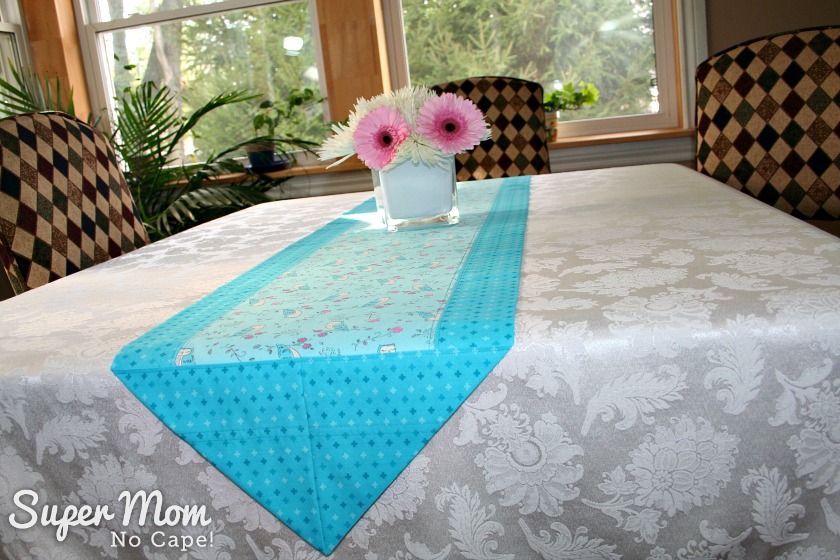
And this one has the owl fabric as the border fabric.
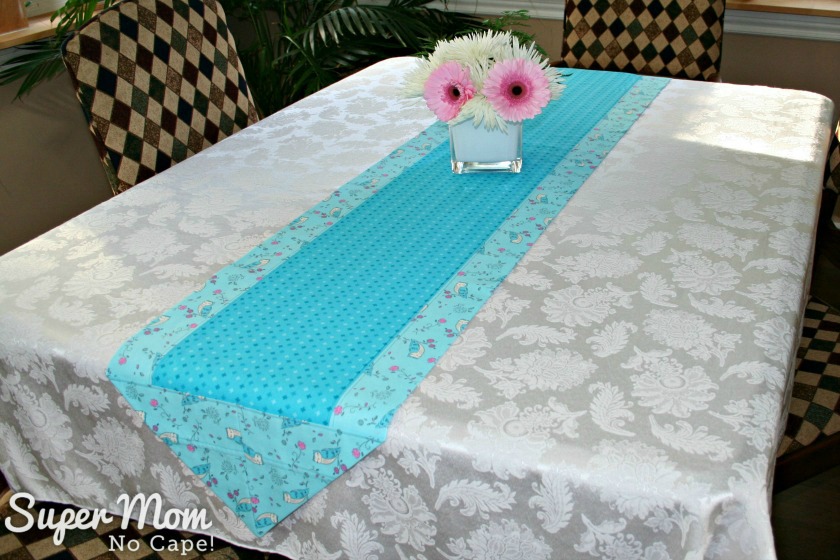
Just for fun, here’s a close up of the owl centerpiece I made to go with the table runners.
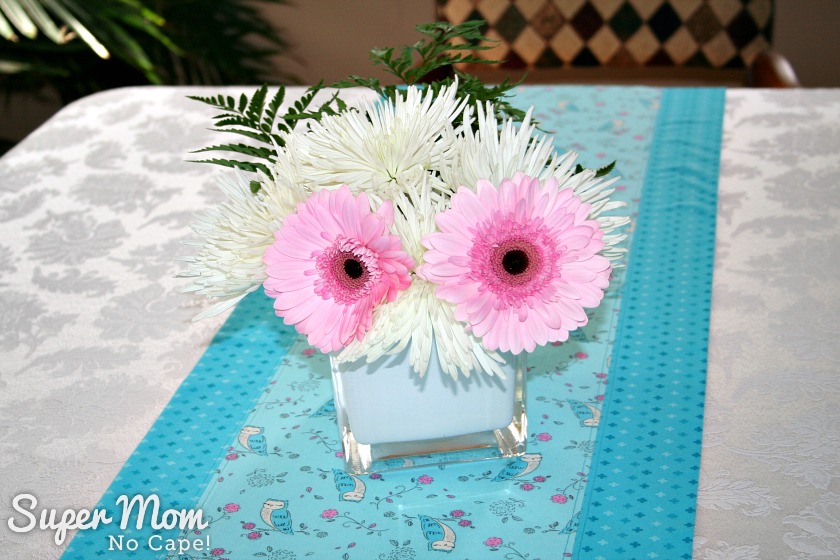
This tutorial was originally published in November 2011. It has always been one of my most popular tutorials so I have completely updated it with more detailed instructions and photos.
Get the ad free PDF
All the instructions you need to make these table runners are right here in this post.
But I realize that it might be more convenient for you to have a copy that you can download to your computer to print out and have beside you as you work. You can purchase the ad free One Hour Table Runner Tutorial PDF tutorial for $5 from my shop.
The original tutorial featured these Christmas One Hour Table Runners.
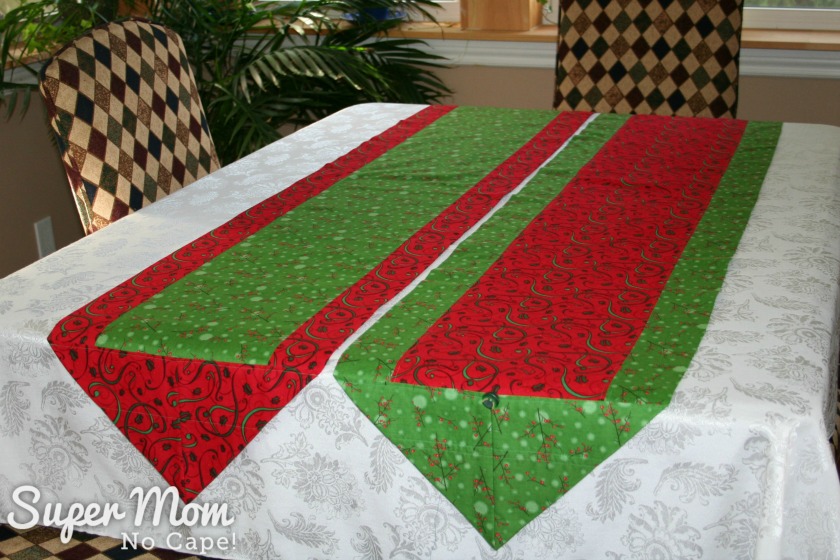
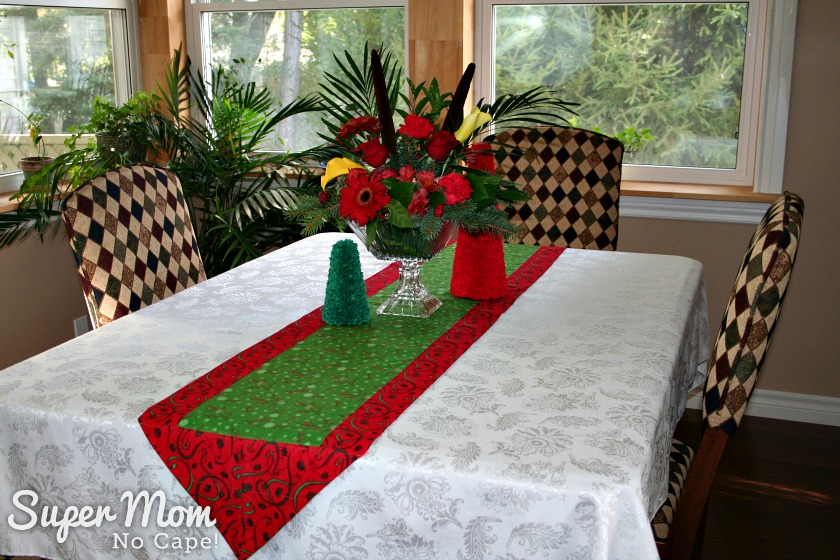

If you make two or even more One Hour Table Runners using my tutorial, I’d love it if post about it and tag me. I’m @supermomnocape on Instagram, @1SuperMomNoCape on Twitter and @1SuperMomNoCape on Facebook.
If you’d like to follow me on any or all of those, I’d welcome that too. 🙂
Pin this tutorial so you can come back to it at any time by clicking on the Pinterest button under this post.
And of course, I’d love it too if you shared it on Facebook or Twitter.
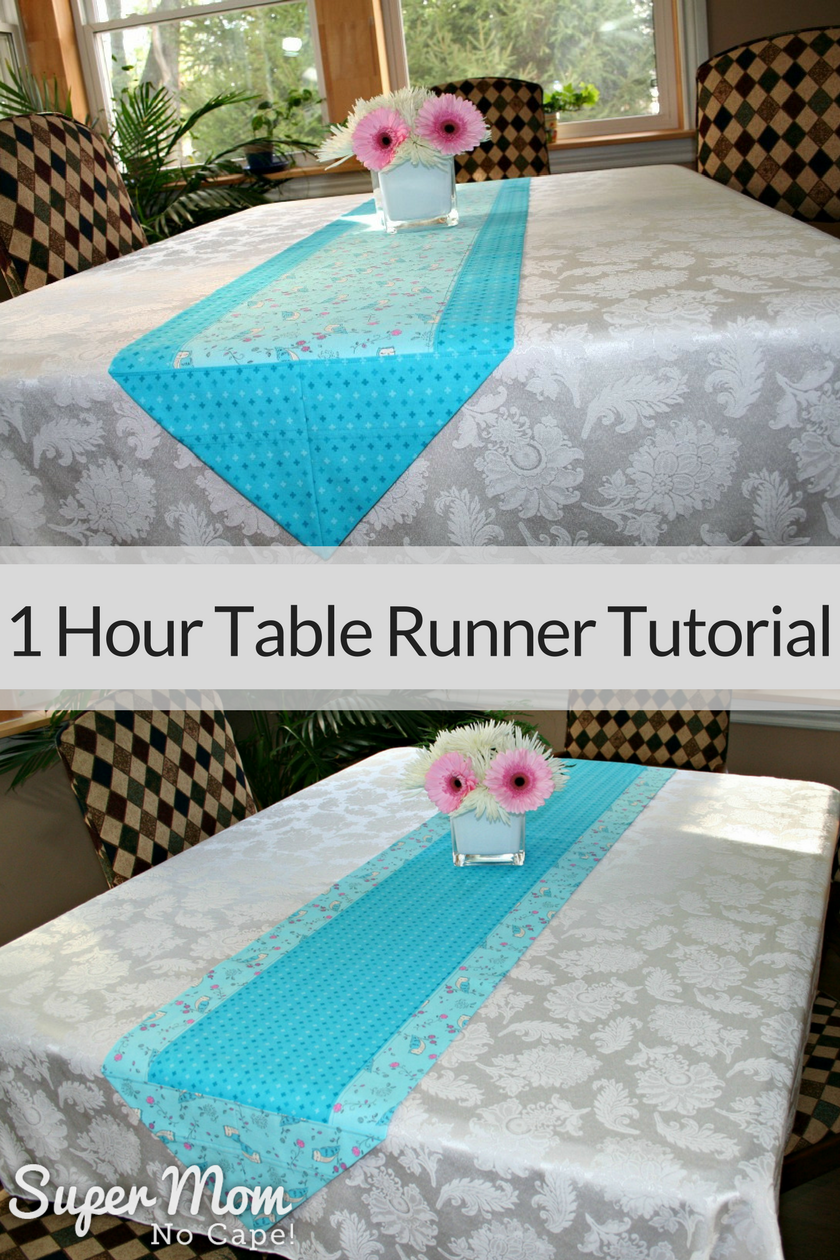
This post contains affiliate links. For more information please check my Disclosures and Disclaimers page. It doesn’t cost you any extra, but it does help support this site.





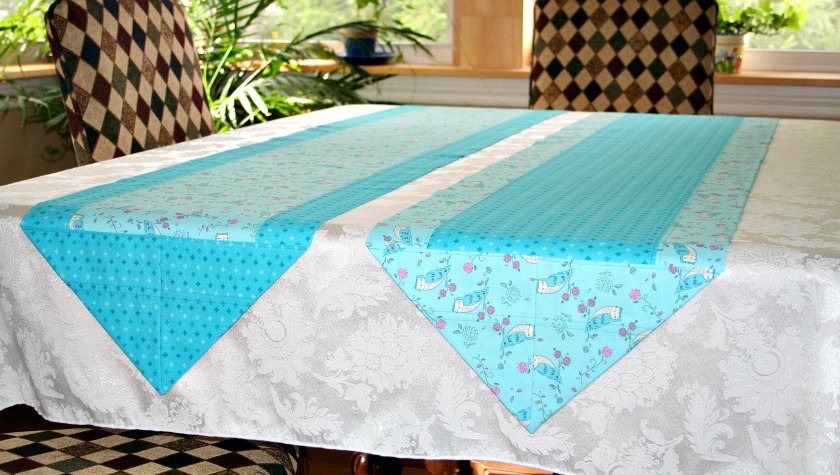

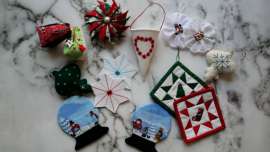
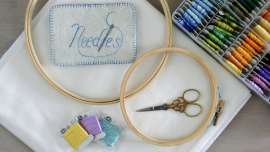

14 Comments
Michel Comeaux
September 18, 2021 4:54 pmSorry to be a pest. I have made several of these runners since our last communication and they have come out fine. I just made a halloween for me. I measured the back and border fabric 19 1/2″ wide nd 60″ long like the others. When I turned it I have way to much extra fabric. Not sure why.
It is for me so I intend to cut it down the back and cut off the extra and seam it down the back.
Any other suggestions or ideas what I did wrong ? I just measured the back fabric from the center fold to the edge and it measures 19″
Lea
November 14, 2017 1:58 amI also get annoyed with the “quick and easy” tutorials. I have been making these table runners for sometime now and there is NO WAY I can make them in 10 minutes. I have it down to 1/2 hour IF and it is a big IF I purchase the fabric cut to size!! I do love these though as they are as versatile as our stash and a great way to use our fabrics.
Leanna
November 7, 2017 10:41 pmTwo hours instead of 10 minutes make much more sense. Your tutorial is great and I love the calculations very handy. i am starting on my Christmas sewing projects tomorrow, these runners are perfect.
Amber Harrop
November 7, 2017 12:33 pmI wish I was better at machine sewing – I do everything by hand
Joy McDonald
November 6, 2017 12:09 amI totally agree that it can’t be done in 10 min! I have made dozens of these… and they all took much longer! Great tutorial… I was planning on doing one, but now I don’t need to! xx
Carrie Groneman
October 30, 2017 3:12 pmAbsolutely beautiful instructions and pictures! Great job Susan:)
Catherine
October 30, 2017 2:03 pmThanks for such a detailed tutorial! I love how pointy you can get those tips.
Deb
October 30, 2017 9:08 amCute table runners love the fabrics, I think those 10 minute runners only count the time to sew not all the detailed work before hand. Either way it would take me an hour just to sew it after I undo the seams two or three times. Love my seam ripper.
Rachel
October 30, 2017 5:10 amI’m with you on misleading titles. All they do is set up the amateur for disappointment!
Charlene
December 10, 2015 5:26 pmI love the origami mug rug/candle mat, very clever! I tried to do but guess my measurements weren’t right, didn’t come out for me to origami fold. Had width 8″ & 15″ but what length?
Barbara
November 1, 2015 2:40 pmI love this table runner tutorial! Thank you for sharing. The only thing I chose to do differently is the top stitching down the length of the runner. I like the look until it reaches the point so I just upicked the part that should show on the point.
Robin (rsIslandCrafts)
November 6, 2011 7:39 amWonderful tutorial. I like how you figured a way to use up the last bit of fabric to make a candle mat.
Sandra :)
November 3, 2011 12:03 pmI finally get it! I’ve read versions of that blog online many times but the instructions for the pointed end always went over my head – until now — NOW I GET IT!!
Maria
November 2, 2011 12:17 amWell done and you clever making the candle mat/mugrug.
Comments are closed.